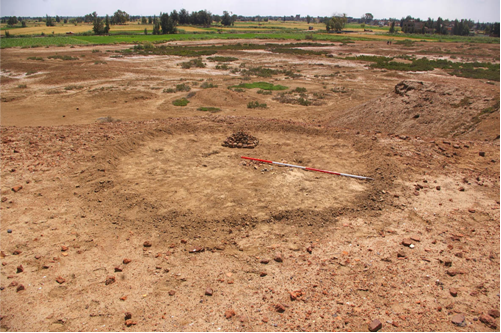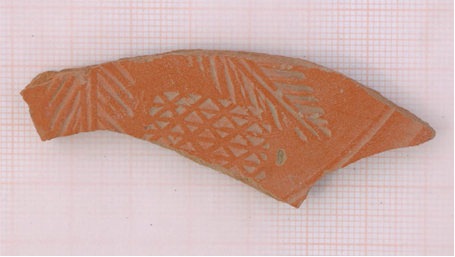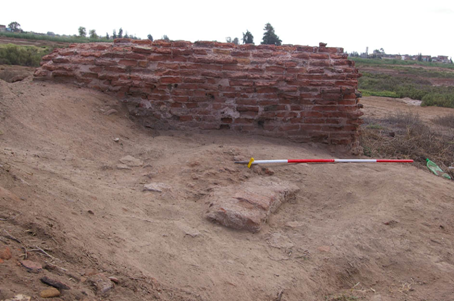Ministry of Antiquities
Source - https://www.facebook.com/pages/Ministry-of-Antiquities/336764893195328
 Mutubis 2014: Pottery sampling circle in south-east sector
Mutubis 2014: Pottery sampling circle in south-east sector
The Durham and Mansoura University /EES/MSA Mission successfully made their archaeological survey at Kom el Ahmar, Tell Mutubis in Kafr el Sheikh and their results suggested the existence of possible Kiln areas. The glass survey confirmed that there were glass kilns at the site manufacturing glass vessels during the Late Roman period.. declared Dr. Mamdouh Eldamaty, Minister of Antiquities.
Eldamaty added that the team succeeded in detecting and determining a number of limestone tiled floors buildings and plastered walls, domestic units, storage areas as well as large monumental walls at certain parts.
Head of Ancient Egyptian Antiquities Sector, Dr. Mahmoud Afify said that detecting this type of walls at this particular site explains the function of a number of tanks existing to the east of the mound suggesting that they were once part of a bath – house with tholos.
On the other hand, the Mission's Director, Dr. Penny Wilson said that many specialized studies were performed on the pottery and glass vessels discovered at the site and on some corroded coins. Results showed that the site was mostly dated to the Roman period and was abandoned soon after the Arab conquest.
 Mutubis 2014: Cypriot Red slipware sherd with impressed palm frond.
Mutubis 2014: Cypriot Red slipware sherd with impressed palm frond.
He added that the team undertook a geophysical survey as part of an ongoing program of work as well as a second intensive pottery and glass survey of the mound and its surrounding flatter areas. The gradiometer survey using gradiometers covered around a hectare of the site with sample areas chosen on the western side of the mound, on the top and on the flatter area to the south-east. The electrical resistivity survey covered the same areas so that the data could be correlated to create intensive sub-surface imaging of the structures of the mound. The results detected strong linear features to the west of the mound, circular and rectangular structures on the top of the site and possible kiln areas on the lower lying areas.
 Mutubis 2014: Cleaned bath area with tholos wall (below), tank (above)
Mutubis 2014: Cleaned bath area with tholos wall (below), tank (above)
The glass survey confirmed that there were glass kilns at the site manufacturing glass vessels during the Late Roman period and a typology of glass vessels was created for comparison with other sites in the Eastern Mediterranean.